Post by Sulema Rodriguez, Noggin Resource Council member for NIH BUILD EXITO
“We shall overcome because the arc of the moral universe is long, but it bends towards justice” – Martin Luther King Jr, at the Washington D.C Memorial

Between ivory buildings and neurons, it was surreal being surrounded by such beautiful classical architecture. We were in Washington DC with NW Noggin, able to speak to Congress members, an experience that opened my eyes to the accessibility of government and the power we possess as individuals. This experience also showed me that there are still people in public office who value science, something I wasn’t certain of given the current political climate.
LEARN MORE: E.P.A. Dismisses Members of Major Scientific Review Board
LEARN MORE: Trump’s budget cuts drastically into science and health programs
During our time in Washington D.C, the House of Representatives was preparing a vote on the “Tax Reform Bill,” which included a provision to significantly burden graduate students. This would divert many bright students from pursuing research. Through this dark cloud, it was uplifting to remember what our mission was: to immerse students in neuroscience, and make our voices heard.

We made our first school visit at Sidwell Friends, where we received a warm welcome from the students and staff. While facilitating the neuron pipe cleaner activity, students asked me questions about my academic interests and expressed their own academic aspirations. My favorite part of outreach is hearing about the students’ goals and what drives them. We also had the ability to speak about the neurological and social benefits of bilingualism.

LEARN MORE: Bilingual Effects in the Brain
LEARN MORE: Bilingualism boosts the brain, NIH study finds
LEARN MORE: Bilingual Brains Are Buff (National Institute on Drug Abuse)
LEARN MORE: How does the bilingual experience sculpt the brain?
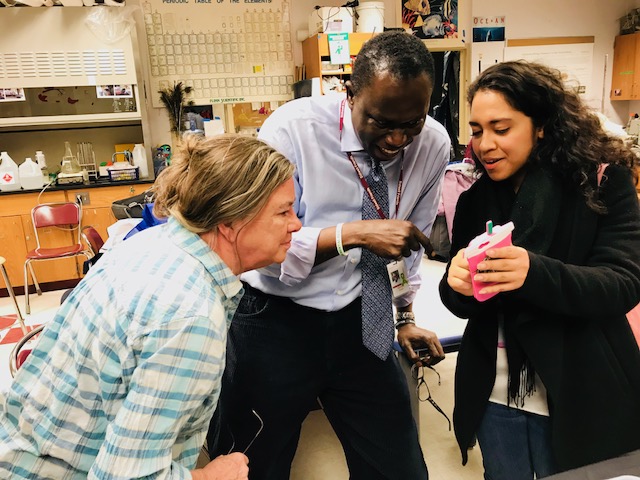
During our visit to Turner Elementary, we were welcomed by approximately 650 students! I can honestly say that this one of the most enthusiastic groups of students I’ve ever seen. While Turner and Sidwell were two different environments, students were as excited to see real human brains and asked me tough, thought-provoking questions. And their facial expressions were priceless!

(Ours too!)
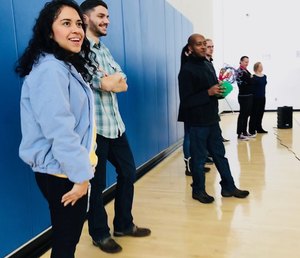
LEARN MORE: Serving 700 students at SfN!
While we were at our Society for Neuroscience booth, I met a plethora of amazing researchers from all over the world. Many people I spoke with were very excited about our pipe cleaner neurons and wanted to make them with their own students and families…
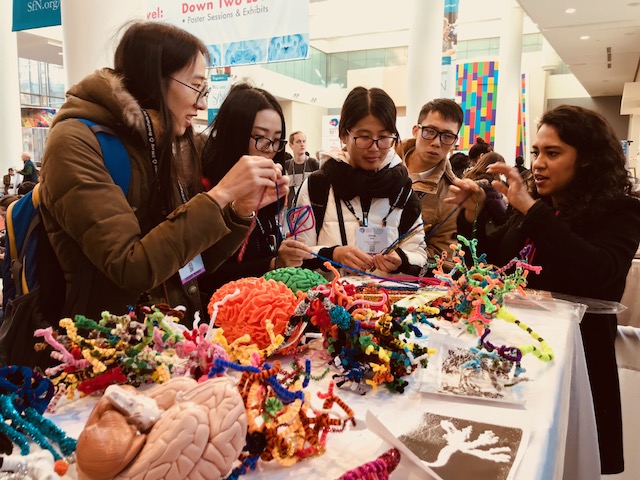
I met two researchers from Universidad Nacional Autónoma De México, and they explained their dementia research in Spanish. It was amazing to hear neuroscience terminology in Spanish; it reminded me that no matter the language differences, science, and the search for evidence-based understanding to address real world concerns, is the same anywhere in the world.

We then headed to the Cannon House Office Building for our Noggin Congressional Briefing with Brains + Art, where I had the opportunity to speak about our work with Portland’s Latino Network, a Latino-led organization grounded in culturally-specific practices and services that aims to lift up youth and families to reach their full potential…
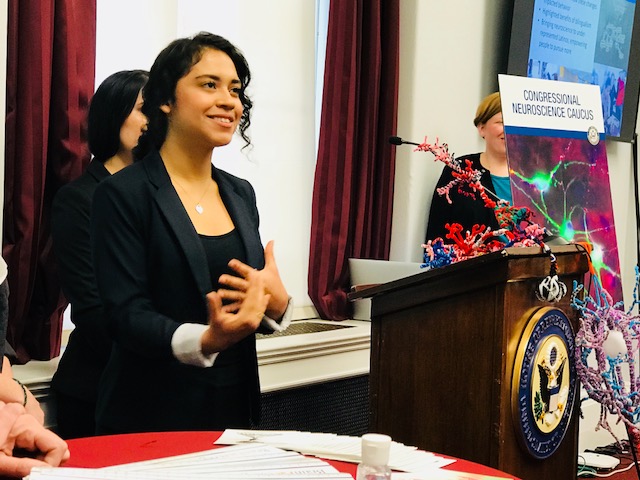
LEARN MORE: Latino Network Learning & Lobes
During our outreach at the Latino Network, we spoke about the benefits of bilingualism. I also disclosed that I’m a person who stutters, and expressed my interest in the neurological mechanisms of stuttering. After giving our presentation, someone approached to explain how their son was beginning to show signs of a stutter. We proceeded to talk about various topics related to stuttering; these types of moments remind me of the humanity of science. Hearing stories like this inspires me to continue pursuing a research career that will help advance the neuroscience and communication disorders community. In turn, I hope to help people communicate and express what they really want to say.
LEARN MORE: Stuttering from NIH/NIDCD
LEARN MORE: A Genetics and Stuttering Update with Dr. Dennis Drayna from the NIH
LEARN MORE:The humanity of science

With Nobel Prize winning neuroscientist LEGEND Eric Kandel (and pipe cleaner neuron!)

This experience has been one of the greatest moments of my academic journey. I’ve always had the idea that science was this unattainable thing; speaking to Congress members also seemed impossible. Every time we attend another school, I hope that we instill excitement in students about neuroscience, about research, and about how our brains grow and develop, and make us who we are. I left the Society for Neuroscience conference overwhelmingly inspired to learn about incredible research occurring all over the world. I was reminded that science is a collaborative effort, and no matter where you are in the world, science is the same in every language.
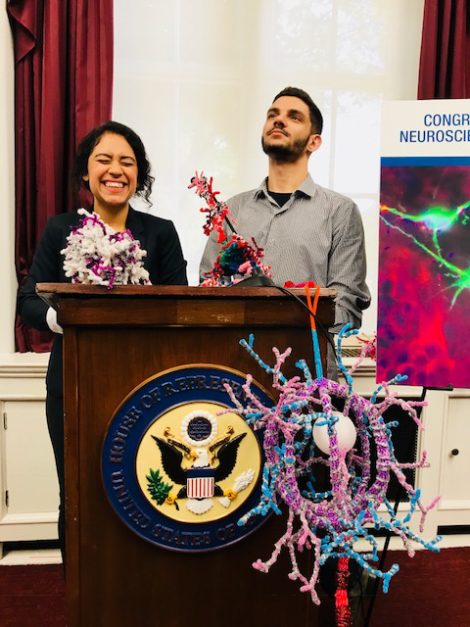
Words cannot express how thankful I am for this opportunity! First and foremost, I’d like to give big thanks to NW Noggin and NIH BUILD EXITO for making it happen! I’d also like to thank Sidwell Friends School and Turner Elementary for welcoming us with open arms!



